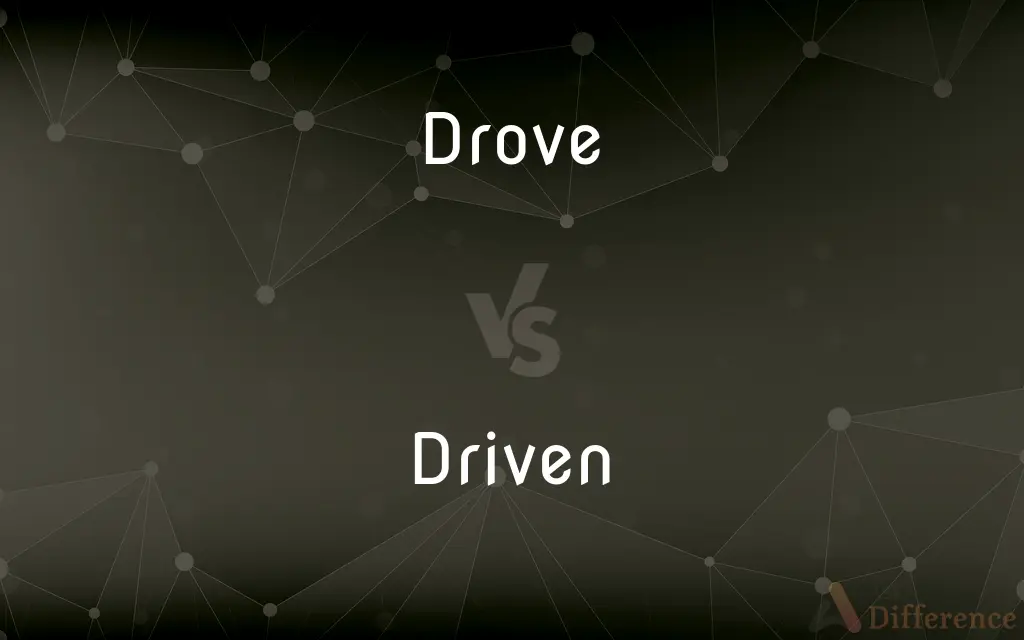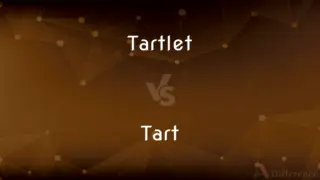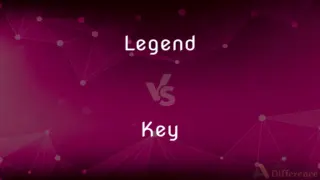Drove vs. Driven — What's the Difference?
By Urooj Arif & Fiza Rafique — Updated on April 4, 2024
Drove is the past tense of drive, indicating the action of driving at a specific time. Driven is the past participle, used for perfect tenses and passive voice.

Difference Between Drove and Driven
Table of Contents
ADVERTISEMENT
Key Differences
Drove serves as the simple past tense of the verb "drive," which is used to describe the act of operating and controlling the direction and speed of a motor vehicle or to push or propel something in a particular direction. Driven, on the other hand, is the past participle of "drive." Past participles are used with auxiliary verbs (have, has, had) to form the perfect tenses, which indicate actions that have been completed at the time of speaking or relate to different times.
The distinction between "drove" and "driven" highlights different aspects of temporal relations and voice in English grammar. While "drove" focuses on a specific instance of the action in the past, "driven" connects the past action to the present or emphasizes the receiving end of the action in passive constructions.
Using "drove" and "driven" correctly involves understanding tense and voice. "Drove" is straightforward, marking a past action. "Driven" requires an auxiliary verb for perfect tense constructions or serves to form passive sentences, thereby offering a more complex insight into the action's timing or focusing on the action's impact rather than who performed it.
Comparison Chart
Form
Simple Past Tense
Past Participle
Usage
Describes completed actions in the past
Forms perfect tenses and passive voice
ADVERTISEMENT
Example
"She drove to the office."
"She has driven to the office before."
Auxiliary Verb
Not used with auxiliary verbs
Used with have, has, had
Focus
On the action itself at a specific time
On the relationship of the action to time or in passive constructions
Compare with Definitions
Drove
Past tense of drive, indicating past action.
Yesterday, I drove through the city.
Driven
Shows the action's impact or the experience.
The stolen jewels were driven across state lines.
Drove
Specifies the act of driving at a definite time.
We drove under the stars last night.
Driven
Past participle of drive, used for perfect tenses.
I have driven that route many times.
Drove
Used to describe a completed action.
He drove his kids to school.
Driven
Used in passive voice constructions.
The car was driven by a professional.
Drove
Indicates direct action by the subject.
She drove the old truck to the farm.
Driven
Indicates an action related to the present or ongoing.
They have driven the same car for a decade.
Drove
Past tense of drive.
Driven
Past participle of drive.
Drove
A flock or herd being driven in a body.
Driven
Piled up or carried along by a current
Driven snow.
Drove
Often droves A large mass of people moving or acting as a body
People moving through the streets in droves.
Driven
Motivated by or having a compulsive quality or need
A driven person.
Drove
A stonemason's broad-edged chisel used for rough hewing.
Driven
Caused, sustained, or stimulated
An export-driven economic recovery.
Drove
A stone surface dressed with such a chisel.
Driven
Powered, operated, or controlled
A piston-driven airplane.
A menu-driven software program.
Drove
A cattle drive or the herd being driven by it; thus, a number of cattle driven to market or new pastures.
Driven
Inflection of drive
Drove
A large number of people on the move (literally or figuratively).
Driven
Obsessed; passionately motivated to achieve goals.
Drove
(collective) A group of hares.
Driven
Formed into snowdrifts by wind.
Drove
A road or track along which cattle are habitually driven; a drove road.
Driven
Of Drive. Also adj.
Drove
A narrow drain or channel used in the irrigation of land.
Driven
Compelled forcibly by an outside agency;
Mobs goaded by blind hatred
Drove
A broad chisel used to bring stone to a nearly smooth surface.
Driven
Urged or forced to action through moral pressure;
Felt impelled to take a stand against the issue
Drove
The grooved surface of stone finished by the drove chisel.
Driven
Strongly motivated to succeed
Drove
To herd cattle; particularly over a long distance.
Drove
(transitive) To finish (stone) with a drove chisel.
Drove
Of Drive.
Drove
A collection of cattle driven, or cattle collected for driving; a number of animals, as oxen, sheep, or swine, driven in a body.
Drove
Any collection of irrational animals, moving or driving forward; as, a finny drove.
Drove
A crowd of people in motion.
Where droves, as at a city gate, may pass.
Drove
A road for driving cattle; a driftway.
Drove
A narrow drain or channel used in the irrigation of land.
Drove
A broad chisel used to bring stone to a nearly smooth surface; - called also drove chisel.
Drove
To drive, as cattle or sheep, esp. on long journeys; to follow the occupation of a drover.
He's droving now with Conroy's sheep along the Castlereagh.
Drove
To finish, as stone, with a drove or drove chisel.
Drove
A group of animals (a herd or flock) moving together
Drove
A moving crowd
Drove
A stonemason's chisel with a broad edge for dressing stone
Common Curiosities
How do I know when to use "drove" vs. "driven"?
Use "drove" for simple past actions. Use "driven" with auxiliary verbs for perfect tenses or in passive voice sentences.
Is "driven" only used in passive voice?
No, it's also used in perfect tense constructions to indicate completed actions relative to the present or other times.
Can "driven" be used without an auxiliary verb?
No, "driven" requires an auxiliary verb (have, has, had) for perfect tenses or is used in passive voice constructions.
What is the significance of using "driven" in a sentence?
It highlights the completion of an action in relation to now (perfect tenses) or shifts focus to the action's recipient (passive voice).
Can "drove" and "driven" be used interchangeably?
No, they serve different grammatical purposes and convey different aspects of time and action.
Can "driven" indicate an ongoing action?
Yes, when used with the perfect tenses, it can indicate actions that have implications for the present or are ongoing.
What does Drove indicates?
Drove indicates the direct action by the subject.
Does using "drove" imply a specific time frame?
Yes, it indicates that the action happened at a specific, identifiable time in the past.
How does the meaning change with the use of "drove" vs. "driven"?
"Drove" specifies a past action at a particular time, while "driven" connects the action to the present or focuses on the action's effect in passive constructions.
Why is it important to distinguish between "drove" and "driven"?
Understanding the difference helps in accurately conveying the time and nature of actions, enhancing clarity and precision in communication.
Share Your Discovery

Previous Comparison
Tartlet vs. Tart
Next Comparison
Legend vs. KeyAuthor Spotlight
Written by
Urooj ArifUrooj is a skilled content writer at Ask Difference, known for her exceptional ability to simplify complex topics into engaging and informative content. With a passion for research and a flair for clear, concise writing, she consistently delivers articles that resonate with our diverse audience.
Co-written by
Fiza RafiqueFiza Rafique is a skilled content writer at AskDifference.com, where she meticulously refines and enhances written pieces. Drawing from her vast editorial expertise, Fiza ensures clarity, accuracy, and precision in every article. Passionate about language, she continually seeks to elevate the quality of content for readers worldwide.














































